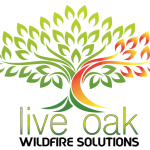The following case study shows how effective defensible space can be. This photo series was taken during the Angora Fire in South Lake Tahoe on June 24, 2007. On that day, there were 40 MPH winds and very low humidity. Fires can grow rapidly in these conditions and overwhelm available fire suppression resources. Once the fire suppression resources burned, the fire continued throughout the community and destroyed 254 houses.
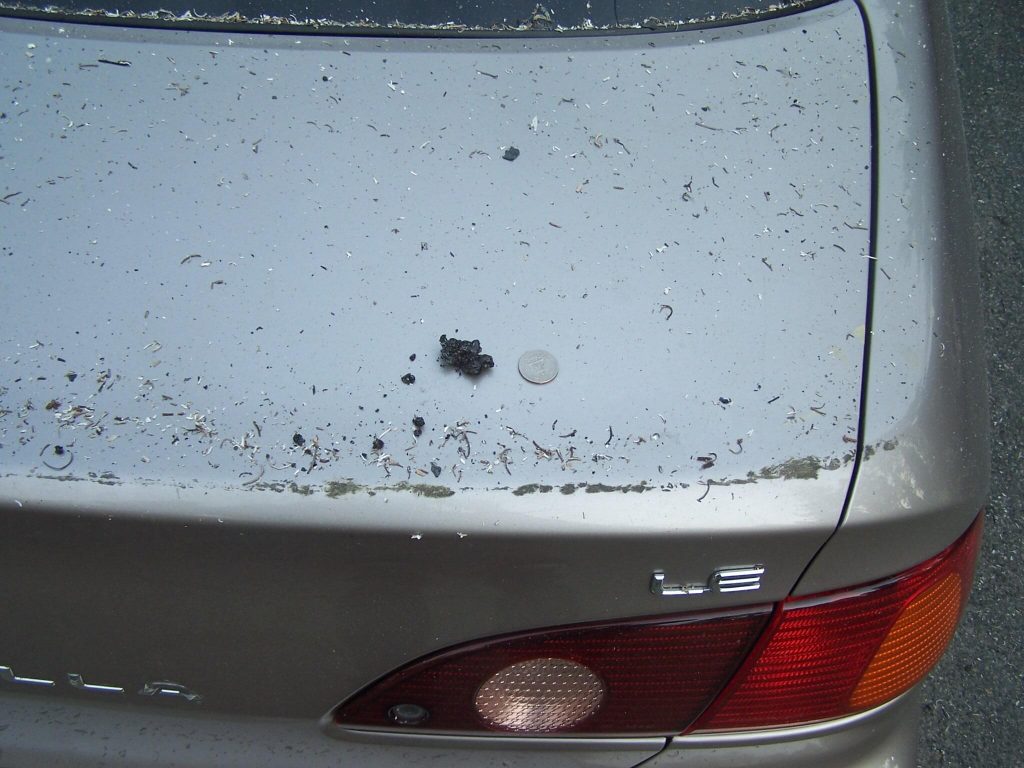
The first photo is of the trunk of my car. I was parked about 4 miles downwind from the fire. This ember was lifted so high into the smoke column that it flew that far. The ember piece was likely still smoldering when it landed on my car. This shows how far loose embers can fly once lifted into the smoke column.
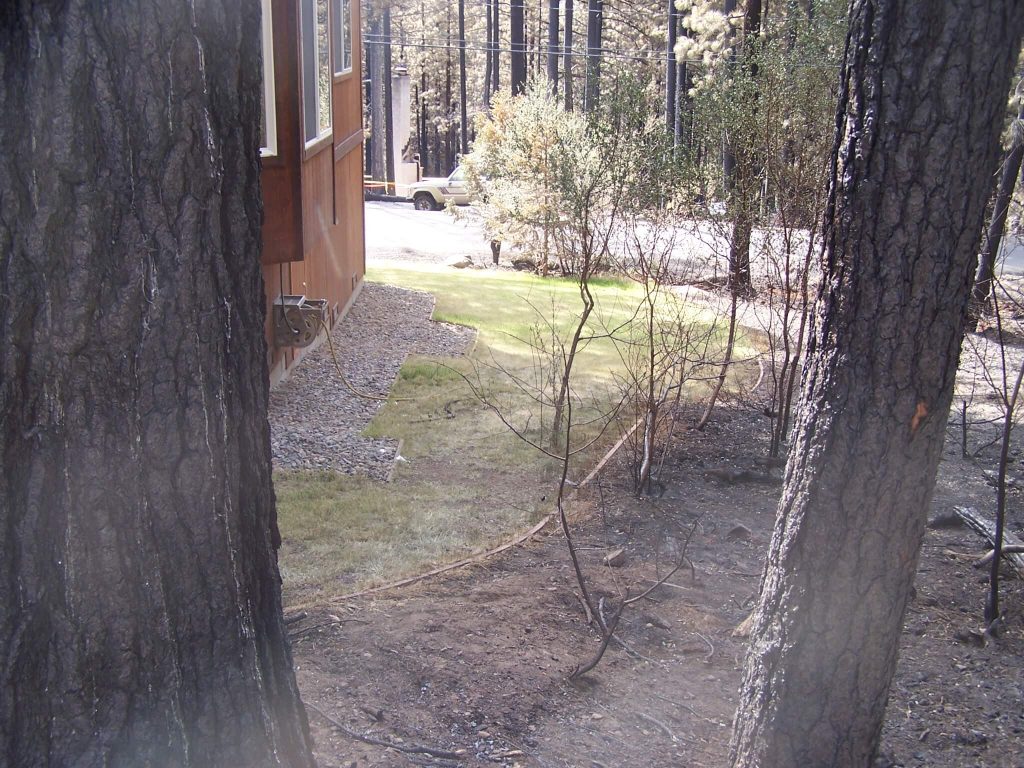
There is a notion that homes explode into flames as fires move through the community, similar to how floods envelope houses. Homes are quite durable to heat exposure, however. Instead, what we see is that firebrands or embers land near the home, ignite light fuels such as leaves or needles near the home, and that light fuel burns down the home. In the following picture, we see a home that was surrounded by very hot conditions, so hot that it burned the bark off the trees. This home survived, however, because the homeowner had raked the leaves and needles around the home, maintained a gravel 5-foot zone around the home and maintained a small amount of lawn. The homeowner had an effective 30 feet of defensible space and the home survived without firefighter intervention.
In the next photo, we see what can happen if the home does not maintain effective defensible space in their yard, but has an effective 5-foot non-combustible zone. Fire burned into the yard and then climbed up the ladder fuels into the tree canopy. Crown fire started within the view of this photograph. The home was exposed to extreme heat but was able to survive with firefighter intervention. The home did have a non-combustible 5-foot zone around the house, which gave firefighters the opportunity to extinguish the fire.
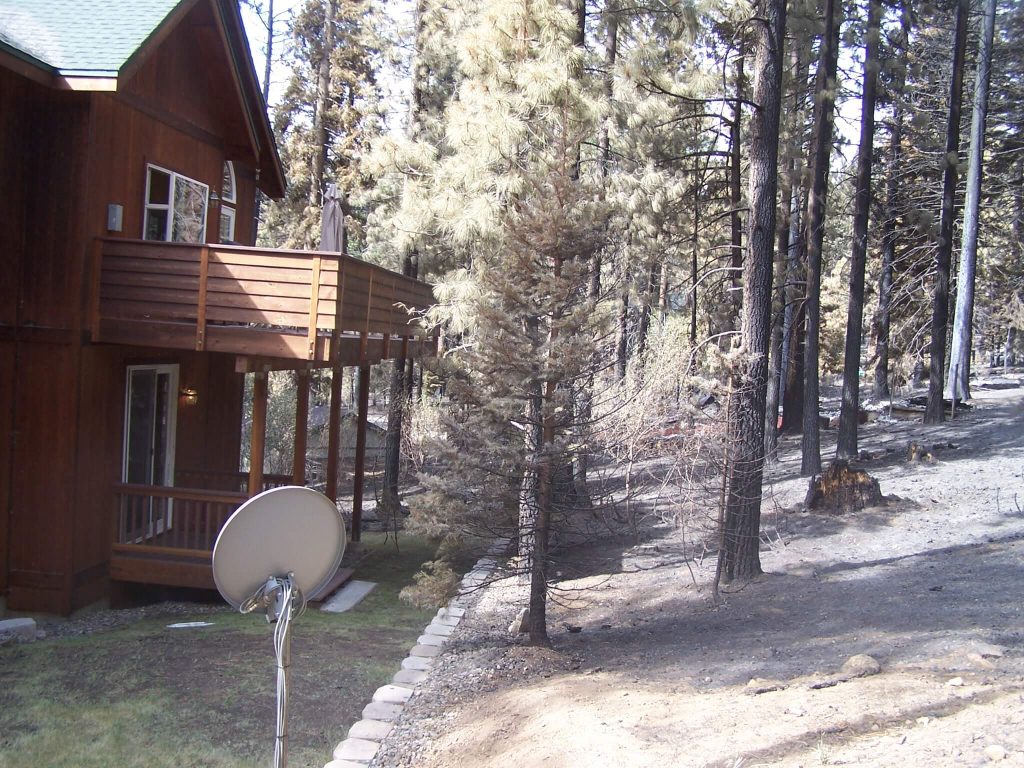
Effective defensible space takes place in the home ignition zone. The following picture shows a home that survived without firefighter intervention. The home was at the head of the Angora Fire and was exposed to extreme heat. The home was able to survive because of a combination of a 5-foot noncombustible zone, grass (although that could be any well irrigated vegetation) extending about 20 feet from the house. The fire burned right to the grass and self-extinguished. This is the goal of effective defensible space.
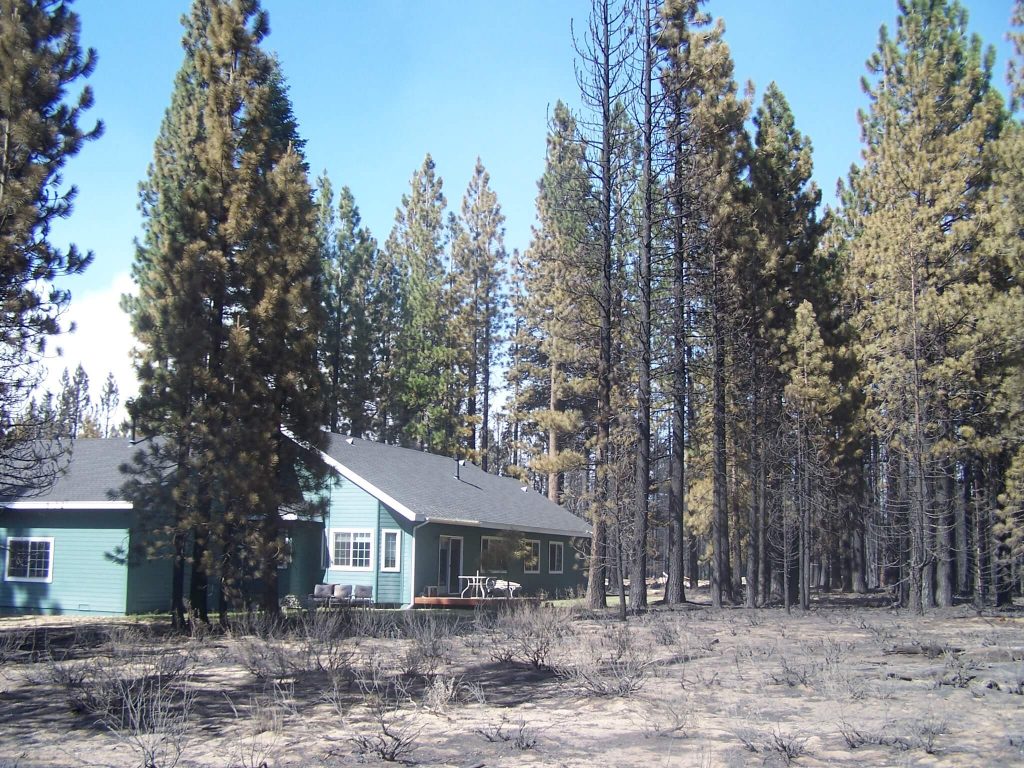
The next house again shows how resilient homes can be; and how a perfectly maintained 5-foot noncombustible zone can work with 30 feet of defensible space. In this photo, the fire burned through the brush in the foreground and then climbed up the trees. Just some minor forest thinning could have prevented this, but nevertheless the home was able to survive because it was surrounded by about 30 feet of well-irrigated vegetation.
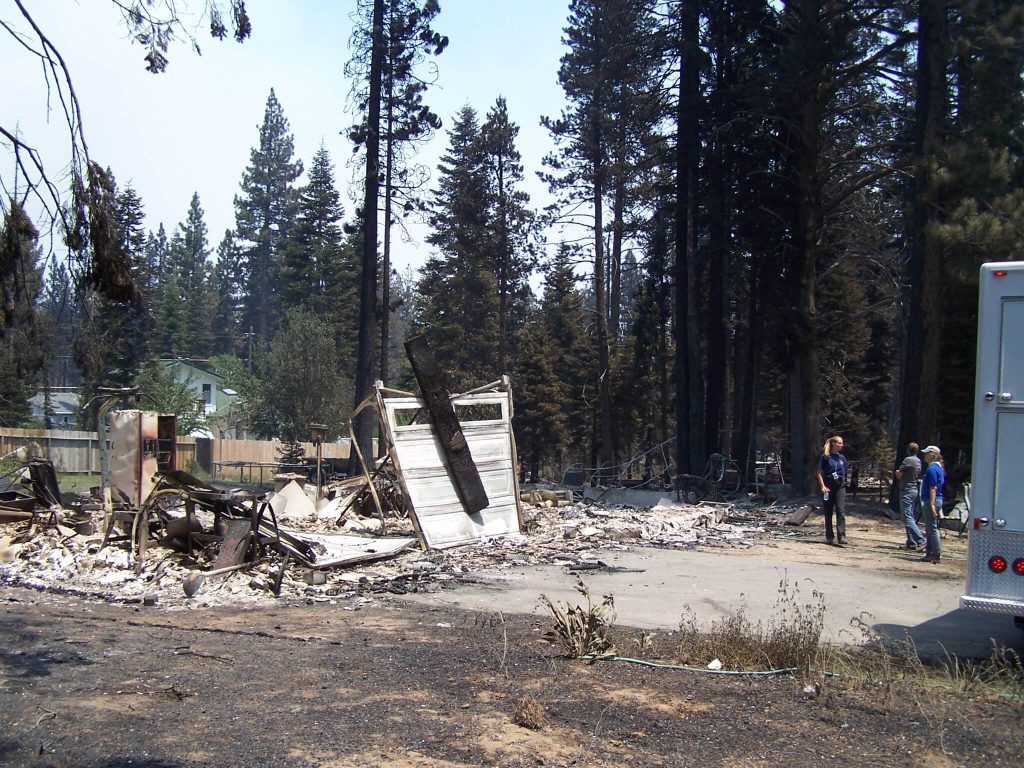
The following photo shows a failure of the 5-foot noncombustible zone. In this picture, the yard was covered with a light blanket of pine needles. The pine needles created a continuous fuel bed that allowed a 4-6 inch flame to burn into the deck. Subsequently, the deck and the home burned to the ground. Notice that none of the trees around the house burned from the fire. This home could have been saved with simply raking around the home.
Neighboring Homes
The following series of photos shows a home that burned but was surrounded by many homes that survived. The home in the foreground that burned was surrounded by flammable brush and a light coating of pine needles. The fire was not burning in any of the tree canopies. Therefore, the home was only exposed to flames about 4 inches to 18 inches in height. Unfortunately, the surface fire was able to burn directly into the home and ignite the structure. (Timeline items 1-3).
The neighbor’s home was exposed to many burning embers and extreme heat from the house burning next door. In this picture, you can see that the side of the neighbor’s home was toasted and turned quite dark. But even with only a 100 feet difference, this wood wall was resilient to having the house burn next to it. This is far more heat than the heat that would affect a home during the most intense crown fire. Nevertheless, the wood wall took the heat. Defensible space saved this home. (Timeline items 4-6).
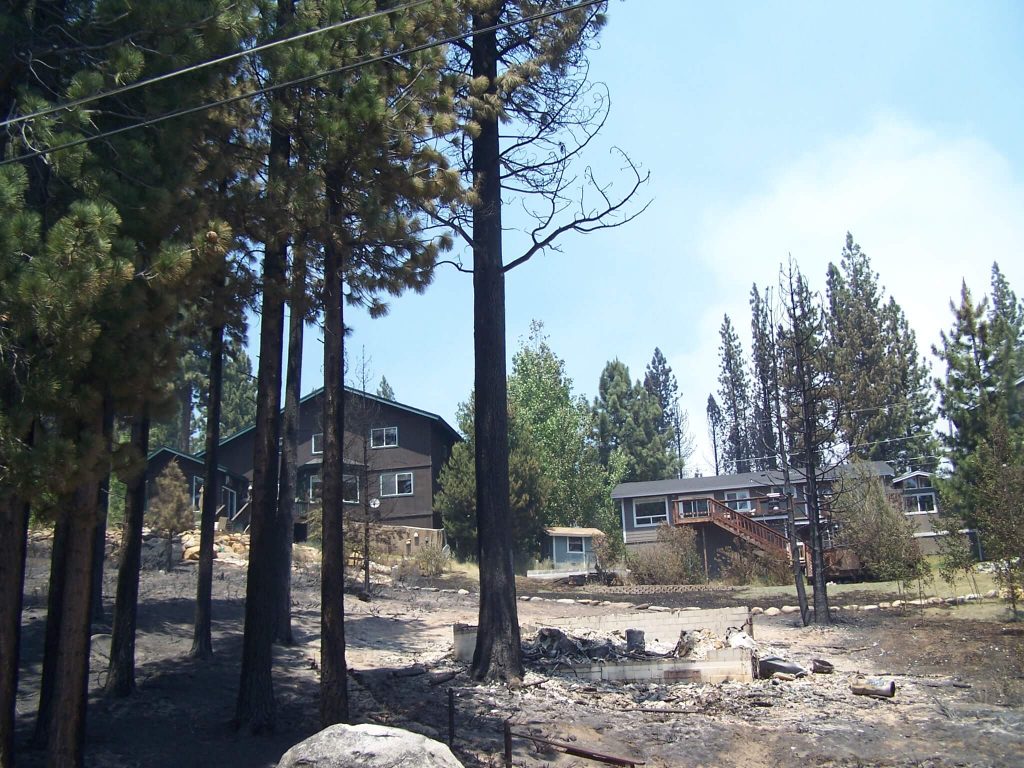
Notice the few pieces left from the house that burned. Even though this house was only exposed to surface fires, its lack of defensible space ultimately caused it to burn.
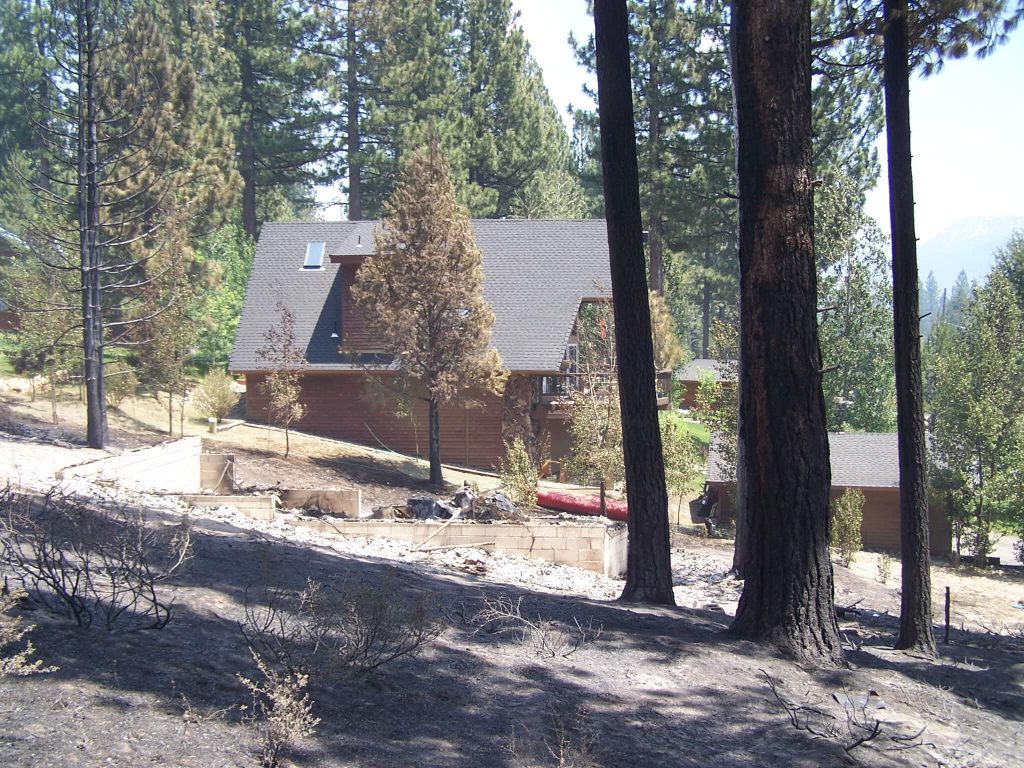
Here is another angle that shows the remnants of the house. Keep in mind, this home was exposed to the same fire as the house standing next to it. The house next to it, however, had effective defensible space and ultimately survived the wildland fire.
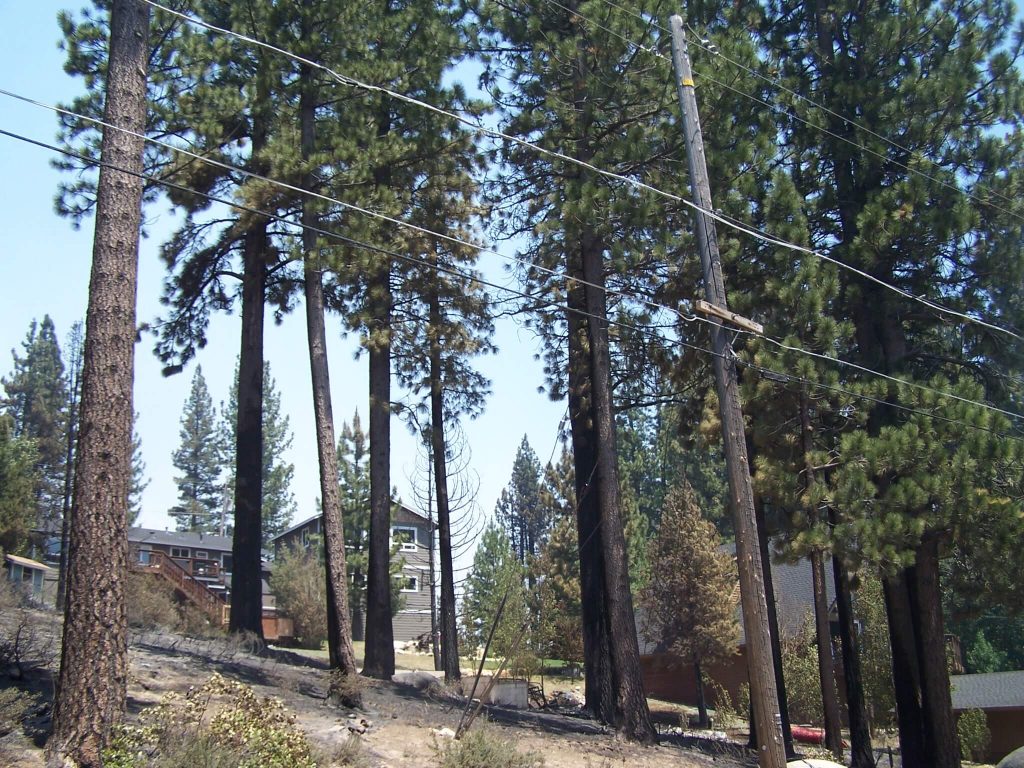
These were the trees that were around the home during the time of fire. Since these trees are still intact, we can ultimately conclude the house fire began from a surface fire instead of a tree canopy ignition.
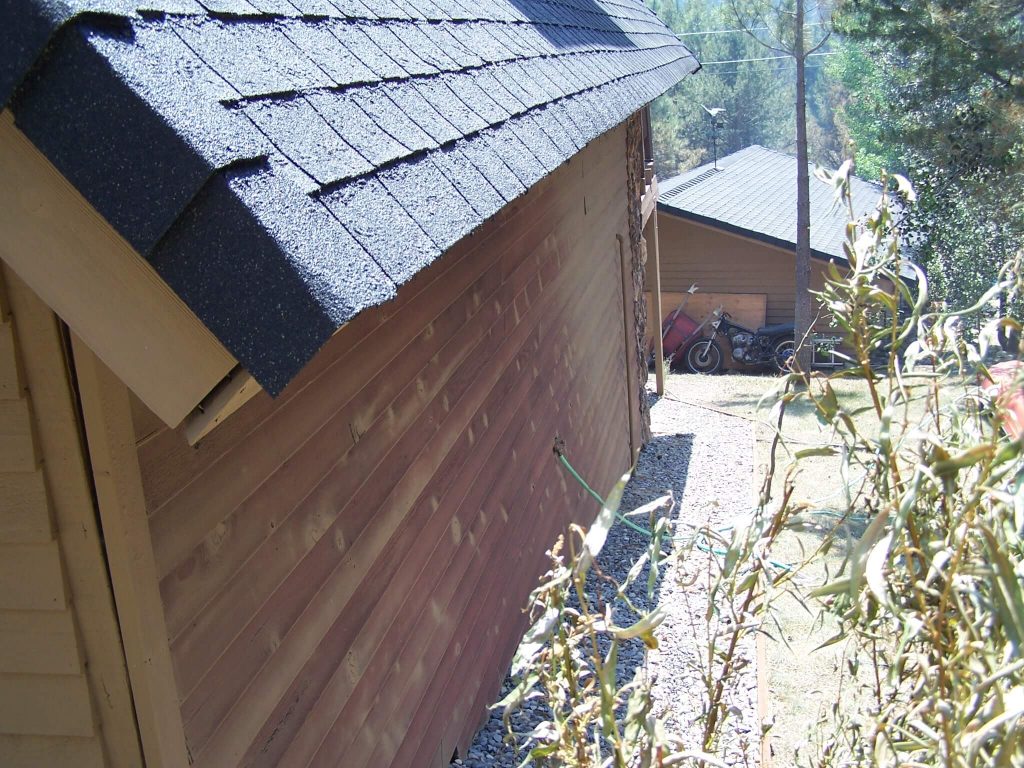
The house was exposed to so much heat that the Class A composition shingle roof began to melt. You can see the bubbling in the photo above.
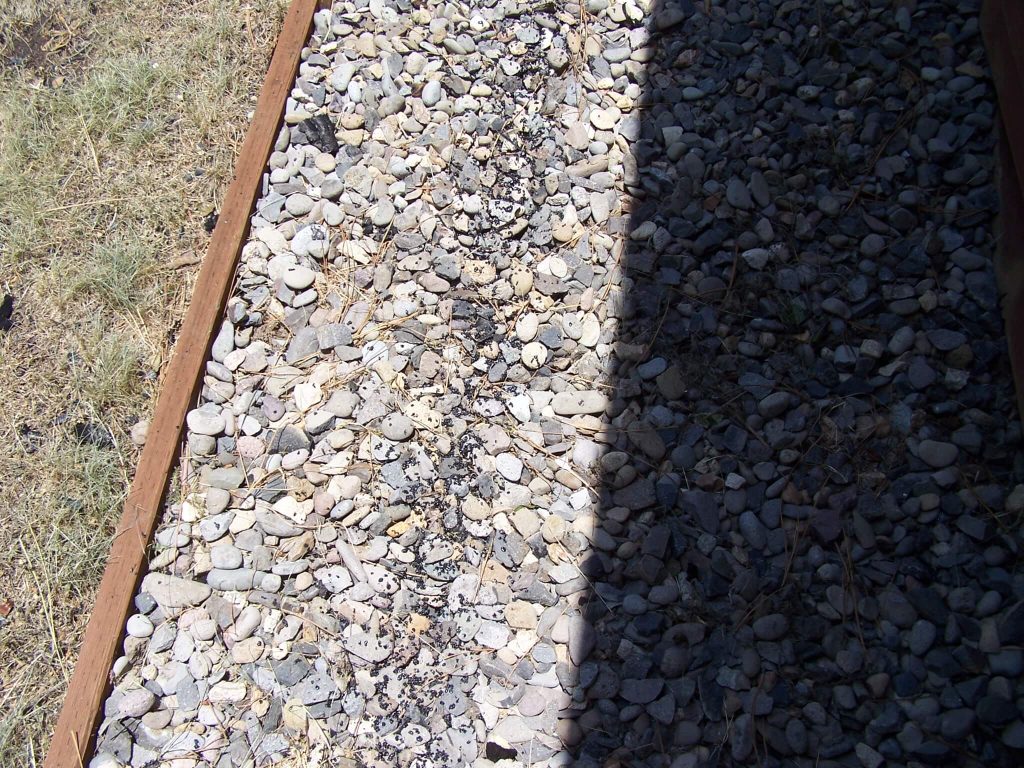
This roof was literally dripping into the 5-foot wide gravel barrier around the home. You can also see the embers that landed within the gravel barrier. These embers were on fire when they landed, but since the homeowner had raked, the embers didn’t land in anything they could ignite.
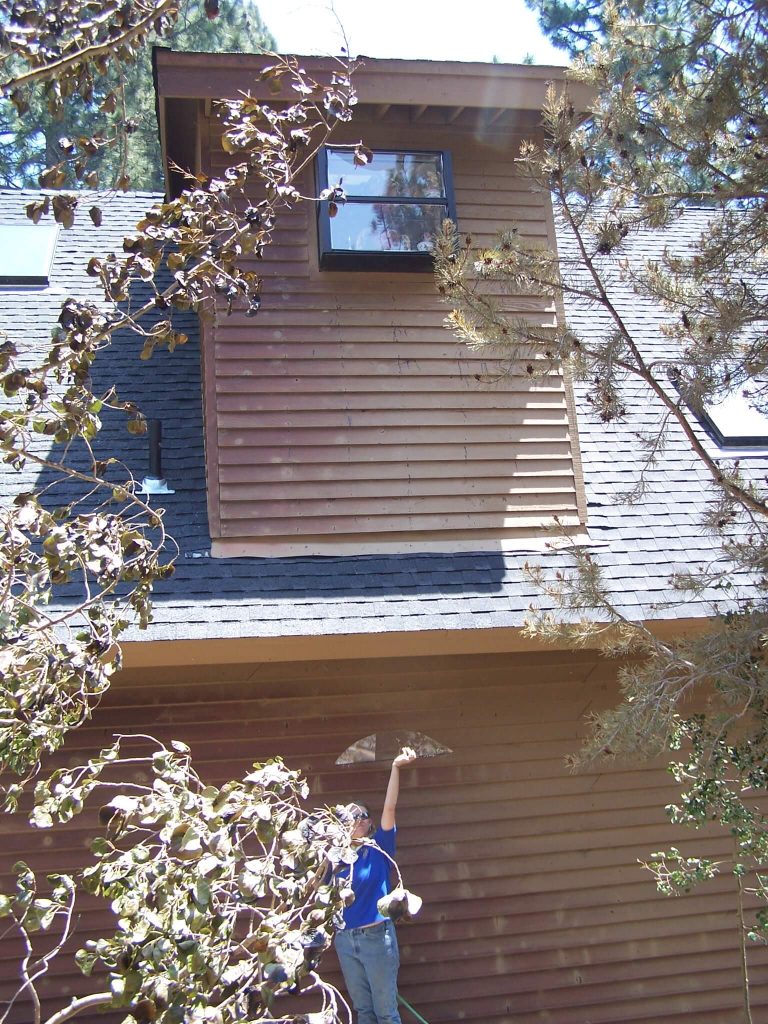
The heat this home was exposed to also caused a window to shatter. The double pained windows, however, prevented the home from filing with embers.
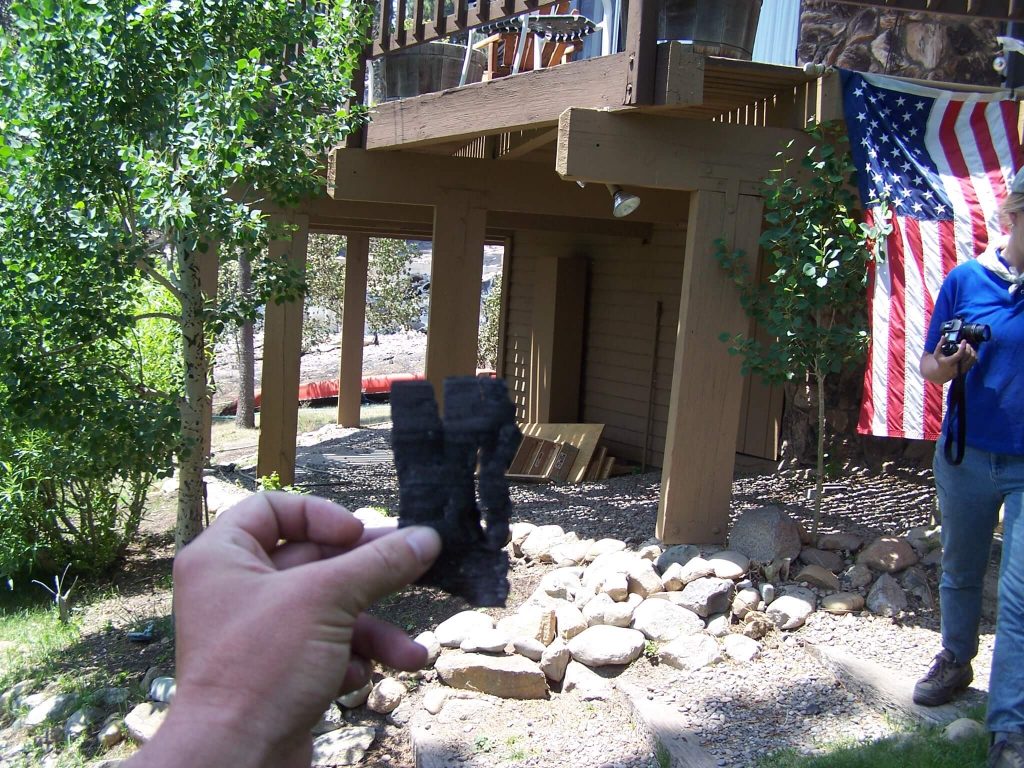
This photo shows the size of a burning ember that landed in the homeowner’s yard. These embers were definitely flying around the home during the fire, but did not land in anything that could ignite. Ultimately, the defensible space this home maintained allowed the home to survive.
Useful Links
Contact Us Today!
- 1-775-220-7675
- jpickettRPF@gmail.com

